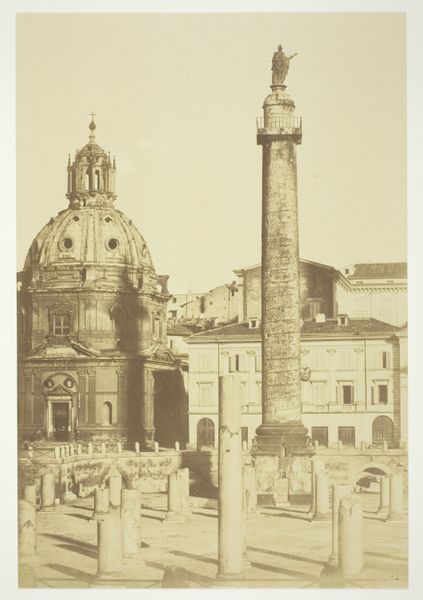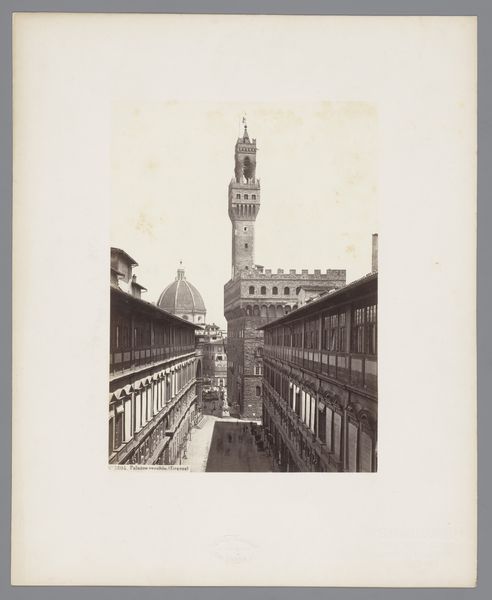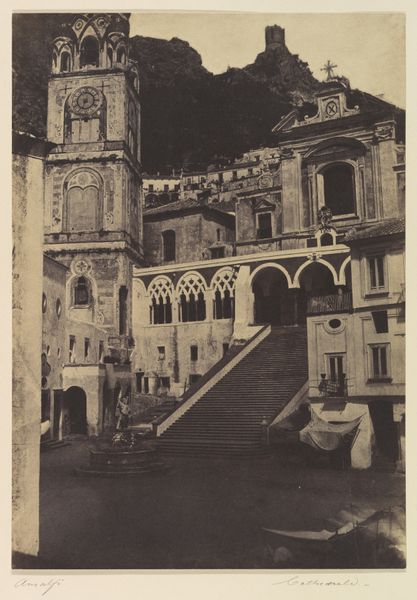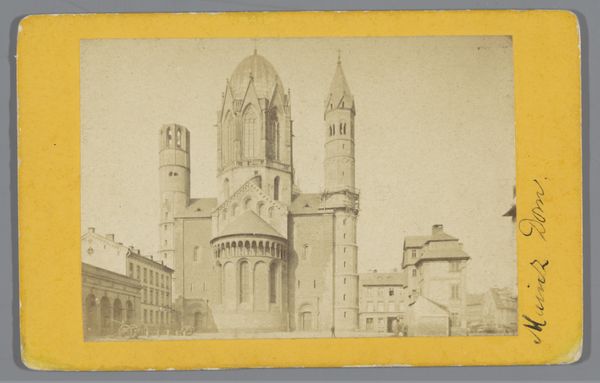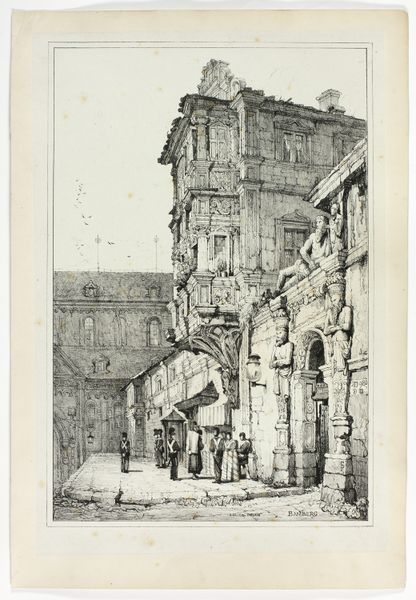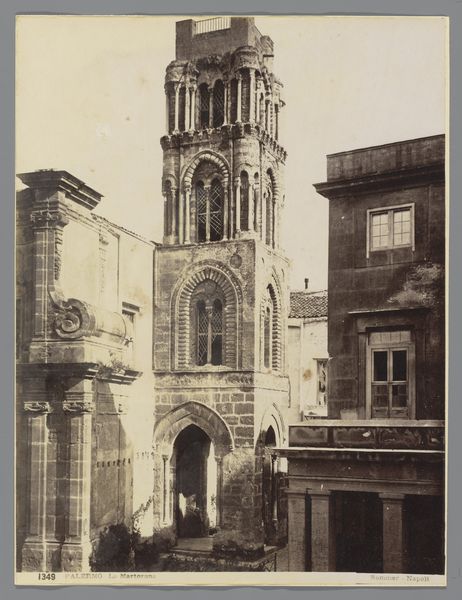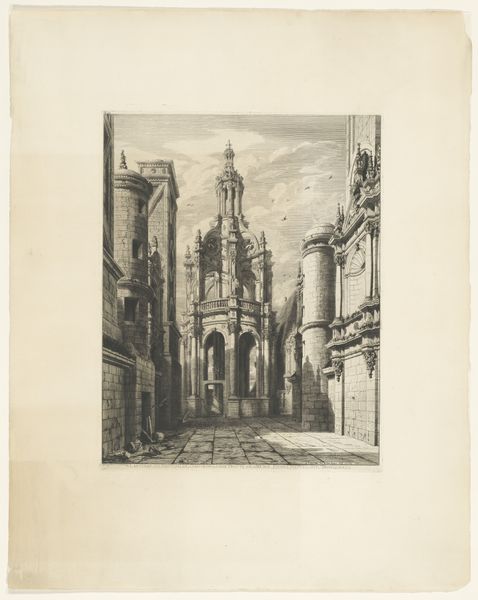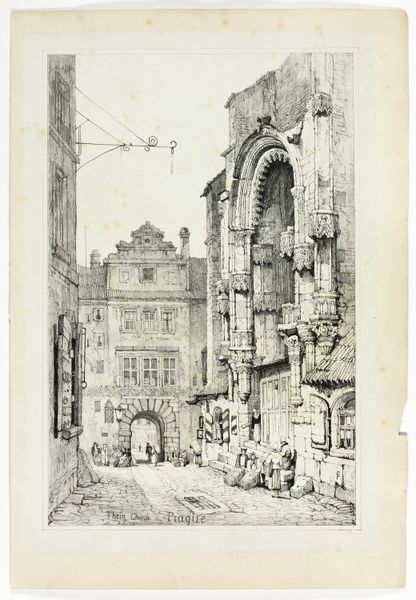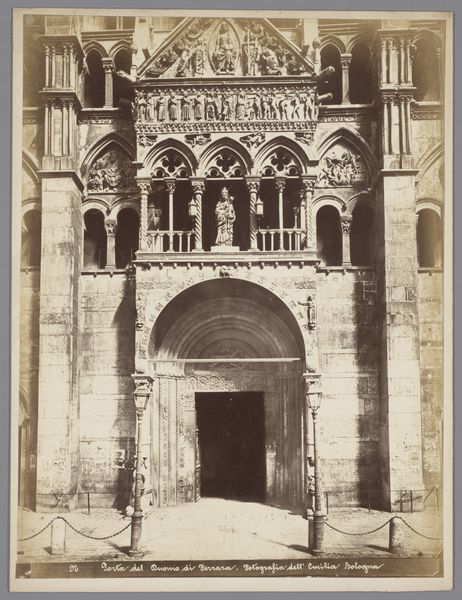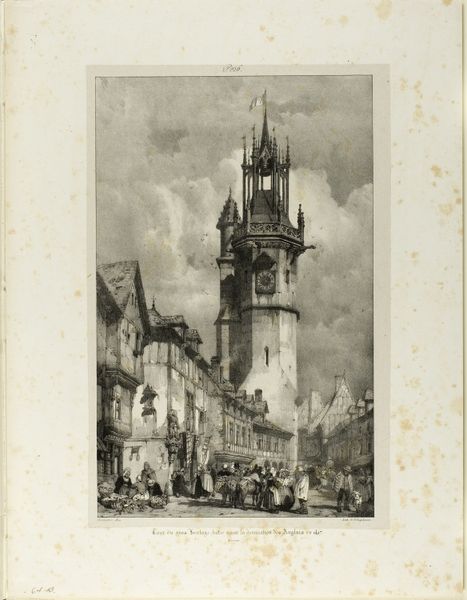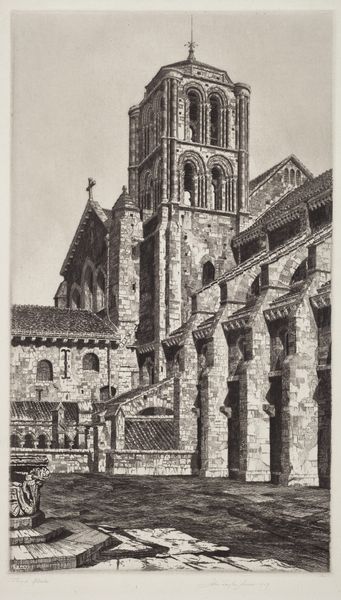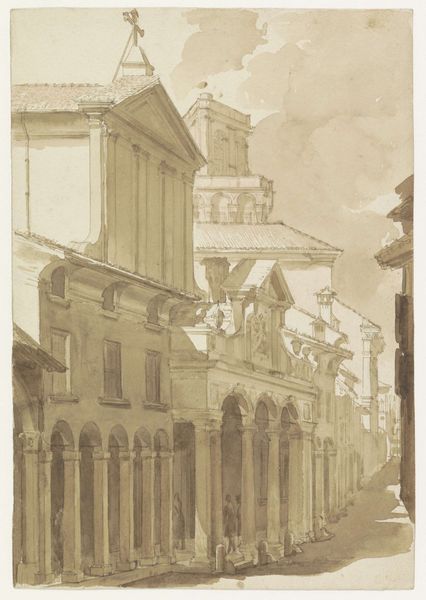
St Etienne du Mont and the Pantheon, Paris, plate 20 from Picturesque Architecture in Paris, Ghent, Antwerp, Rouen, Etc. 1839
0:00
0:00
drawing, lithograph, print, paper
#
drawing
#
muted colour palette
#
neoclassicism
#
lithograph
#
ink paper printed
# print
#
light coloured
#
paper
#
romanticism
#
muted colour
#
cityscape
#
monochrome
Dimensions: 351 × 288 mm (stone); 533 × 361 mm (sheet)
Copyright: Public Domain
Editor: So, here we have Thomas Shotter Boys' lithograph, "St Etienne du Mont and the Pantheon, Paris," created in 1839. There’s this almost dreamlike quality to it because of the muted colors, but also a certain stillness. The Pantheon feels so distant, while St. Etienne looms large. What do you see in this piece? Curator: Immediately, I am drawn to the visual conversation between power, represented by the Pantheon, and faith, embodied by the Church of St. Etienne. Note how the artist positions them in relation to each other. The Pantheon, a symbol of reason and the Republic, is shrouded in shadow, almost a ghostly presence. Etienne du Mont, illuminated, takes on a dominant position in the public’s awareness. Doesn’t it make you wonder, why frame them in such opposition? Editor: That's interesting, I didn't notice the contrast between light and shadow at first glance. But I see it now, especially how the Pantheon seems further away, both in space and in visual emphasis. Was Boys making a comment on the changing societal values? Curator: Indeed. Think of what these buildings represented in the collective consciousness. One represented divine right, and the other… revolution! Boys cleverly employs the symbolic weight of each building, their very architectural forms whispering volumes. He captures not just a place, but a moment in the ongoing dialogue between tradition and change. The figures strolling in the square appear oblivious to the visual and cultural tension embodied in the scene. Don’t you wonder what those figures represent as well? Editor: Now that you mention it, it feels like he's staging the scene almost theatrically. I’m starting to look at architecture in a whole new way now. Curator: Art invites us to unravel the threads of history woven into the visual, leaving us forever enriched and awakened. Editor: I completely agree. I learned so much from this one lithograph!
Comments
No comments
Be the first to comment and join the conversation on the ultimate creative platform.
